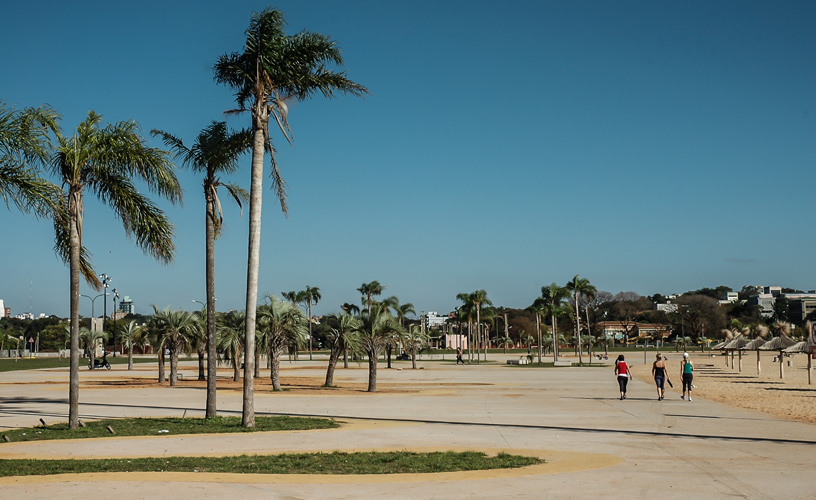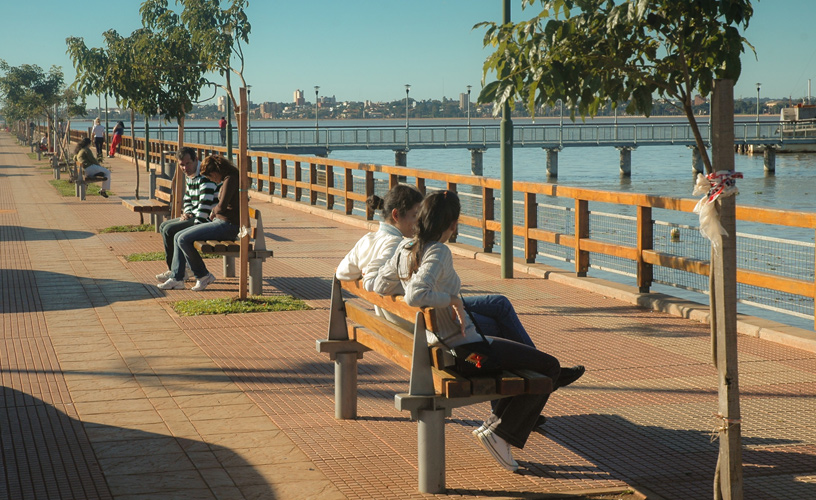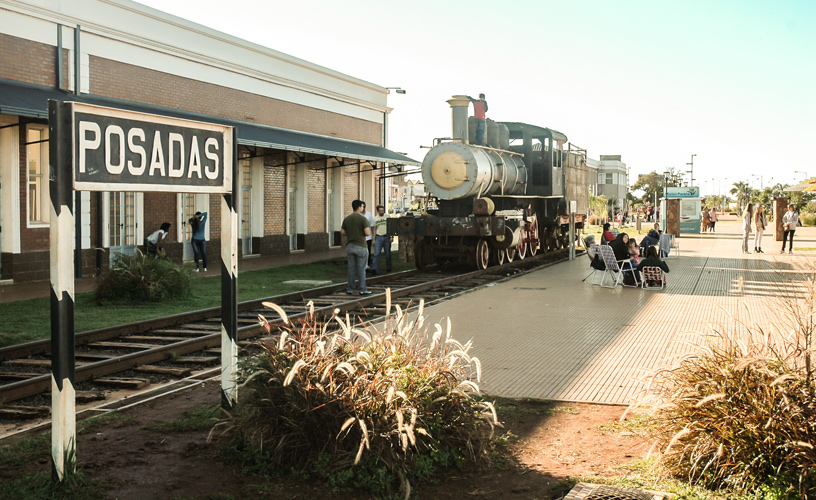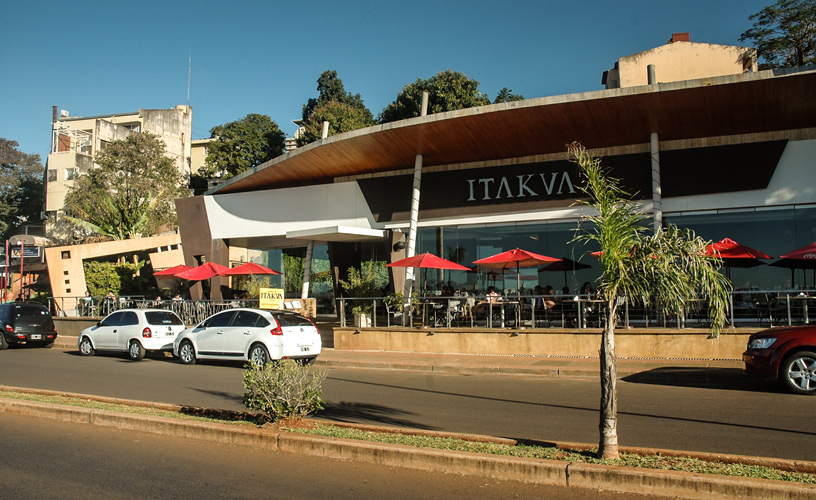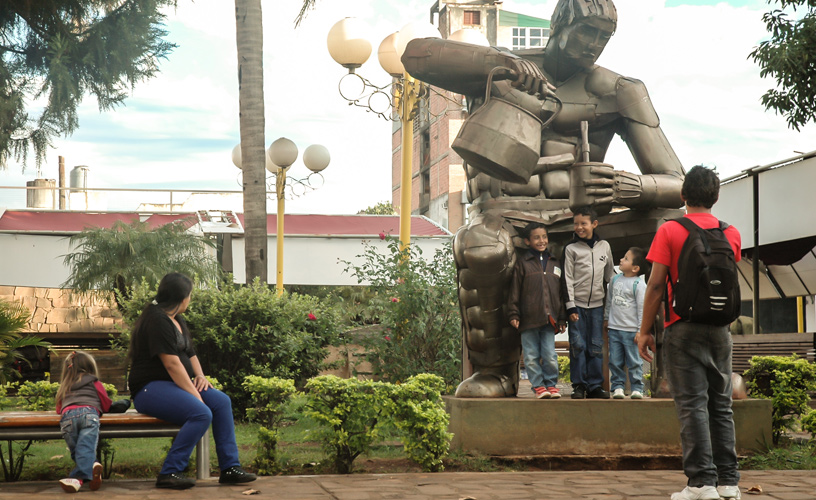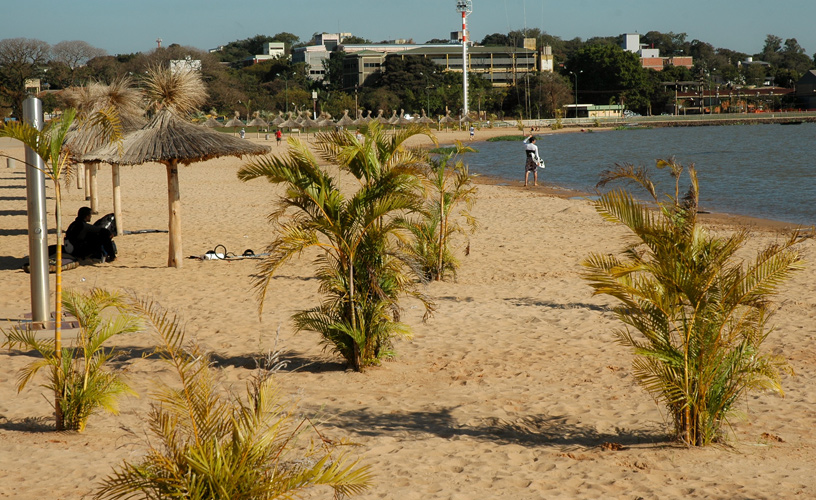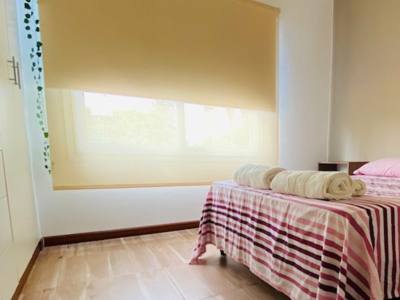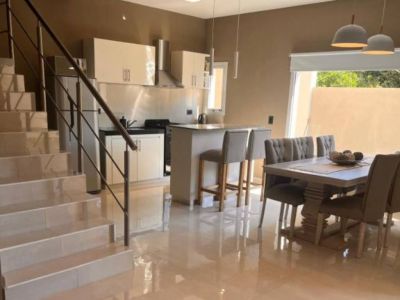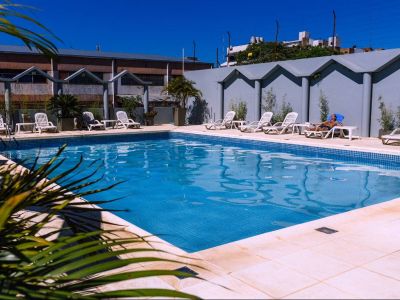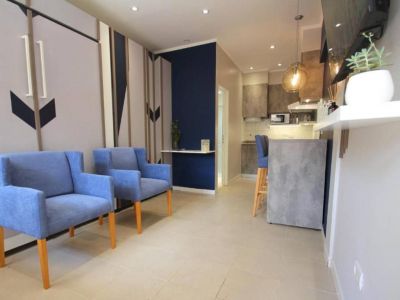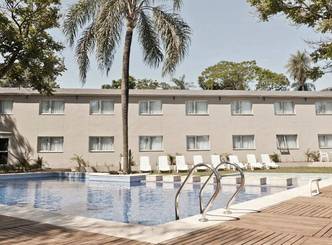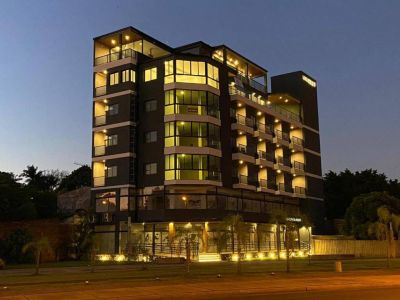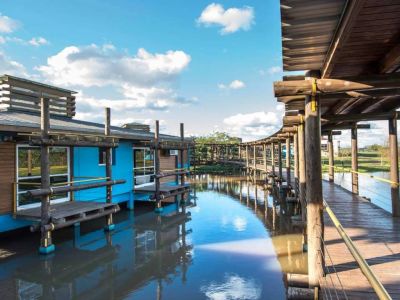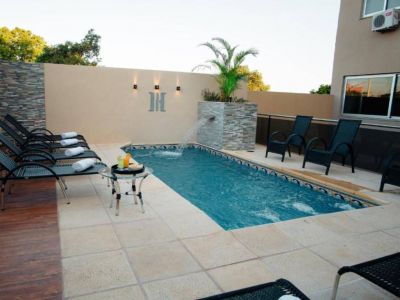Posadas, capital city of the red soil, has had sustained growth ever since its foundation. This fact is evidenced in the number of new buildings raised in its urban shell.
It is the main area where
Misiones production converges. When looking at its streets, its waterfront and public buildings, one can see its history, customs and people. The most important shops, which give the city a cosmopolitan touch, are on Bolívar, San Lorenzo and Colón Streets. At this location, tourists can purchase typical products or choose lodging in comfortable and modern hotels. Its main Square, 9 de Julio, shows at first sight why
Posadas is considered the "Doorway to Nature". Dense vegetation made up of Paraná pine trees, pink trumpet trees, pacara earpod tree, rosewood, palm trees, jacaranda and flamboyant trees offer visitors cool shade, mainly chosen on days when the temperature is higher than 30º C. On the sidewalk there is a Craft Market, where articles hand-made by Guarani native people are displayed and sold. The Government Palace is opposite the square, on Félix de Azara Street, between Bolívar and San Martín. This house dating from 1883 and built by the Italian engineer Juan Col used to belong to former President Julio Argentino Roca. Its architectural lines corresponding to the French Academicism style stand out.
The Cathedral with its Romantic style is also opposite 9 de Julio Square, on San Martín Street between Colón and Félix de Azara. It was a masterpiece by architect Alejandro Bustillo, and it was opened in 1937. Its patron Saint is Joseph the Worker. Setting out along Colón Street, heading for the waterfront, visitors can see Republic of Paraguay Park. It is called like this because it was donated by the neighboring country, as a token of appreciation for the help given by the people of Posadas to the residents of Encarnación after a tornado had battered the Paraguayan city. Aníbal Cambas Regional Museum is located in the park venue. Items belonging to the native cultures of the region are displayed together with artifacts from the Jesuit period and firearms from the wars of Independence and of the Triple Alliance. “Manuel Antonio Ramírez” local amphitheater, where folk music and regional singing shows are performed, is opposite Paraguayo Park. It can seat 5,000 people and it hosts the Littoral Festival every year in November. There is a gorgeous panoramic view of the Paraná River from the back of the amphitheater, from where the City of Encarnación may be spotted on the opposite bank.
Down Fleming Street Bajada Vieja, a traditional neighborhood where the "Turkish shops" used to be located in the old days, may be visited. People coming from Lebanon and Syria got together there to hire agricultural laborers, called mensúes, to work in the yerba mate plantations. It is worth mentioning that the Vieja Casona buildings, raised in 1923, and the Mundo Niño and St. Patrick’s Schools, which were formerly used as housing by the mensúes, are among the most outstanding constructions. Following down Fleming Street, which ends at the port of the city, there is a gorgeous panoramic view of the river and the bank. At present, Posadas has a renewed waterfront and port area as a result of the maintenance carried out by Empresa Yaciretá, in charge of the cleaning up of the region. Chosen by the inhabitants of the city to enjoy jogging, biking, or sharing pleasant moments with friends while tasting the typical tereré mates in the evenings, the waterfront has become the meeting point of the people in Posadas. Likewise, 3,000-meter-long San Roque Gonzalez de Santa Cruz Bridge, which connects the city of Posadas and the city of Encarnación, may be appreciated at this spot. From the waterfront visitors can go to the old railway station or they can visit the model market called La Placita del Puente, a true free fair, located at the base of the International Bridge, where many remarkable regional items, crafts and electronic products can be purchased. At La Placita del Puente, delicious typical dishes like chipá, sopa paraguaya, caburé o mbeyú may be tasted. Mitre Avenue leads to San Roque Gonzalez de Santa Cruz International Bridge -first founded in 1987-, where the Argentinian migration and customs posts are located. Back on Uruguay and Mitre Avenues, the Old Terminal may be visited. Exhibitions of local artists are held at this spot. To end this city tour, we suggest going back to the city center along Buenos Aires, Bolívar or Rivadavia Streets and visiting the public tour Bosetti. Rivadavia Street leads to the Lucas Braulio Areco Museum of Fine Arts. Marcelo Sola
Pablo Etchevers
Phone: +54 376-4641817
